The Rise and Fall of the Roman Empire: Unraveling the Epic Saga
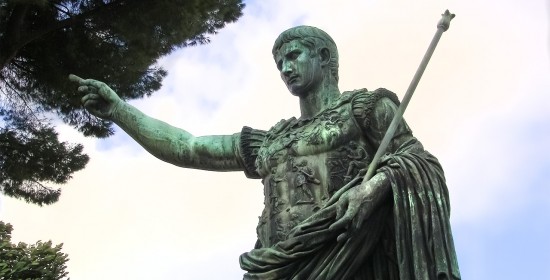
Buongiorno and welcome to Stefano’s RomeCabs, Rome’s top-rated company for private tours of Rome and Rome Shore Excursions from Civitavecchia. Rome is filled with vestiges of the great Roman Empire, showcasing the city's rich history and its status as the capital of one of the most influential empires in history. From the Colosseum to the Pantheon and Baths of Caracalla, visitors can enjoy exploring these wonders on day tours in Rome.
How did a modest hilltop village called Rome ascend to become the mighty Roman Empire, dominating the ancient world, and what ultimately led to its dramatic decline and fall? The rise and fall of the Roman Empire is a captivating saga that spans centuries, encompassing political intrigue, economic challenges, military conflicts, and cultural transformations.
The actual decline and fall of the Roman Empire is a multifaceted and complex phenomenon that unfolded over several centuries. It is a story of political intrigue, economic challenges, military conflicts, and social upheaval.
To understand the intricacies of this historical event, let us delve into the details of the Roman Empire's rise and eventual collapse, and unravel the intricate web of events that shaped the destiny of one of the greatest civilizations in human history.
Join us on a journey along Rome’s Empire Roads through the annals of time as we explore the highlights of the rise, decline, and ultimate collapse of the mighty Roman Empire.
The Rise and Fall of the Roman Empire:
Unraveling the Epic Saga
Part 1: The Rise of the Roman Empire
The Roman Empire began as a primitive hilltop village known as Rome that grew into a kingdom, only to later emerge from the ashes of the Roman Republic and evolve into a formidable force under the leadership of figures like Julius Caesar and Augustus.
Let’s explore the highlights of the founding of Rome all the way to the Pax Romana.
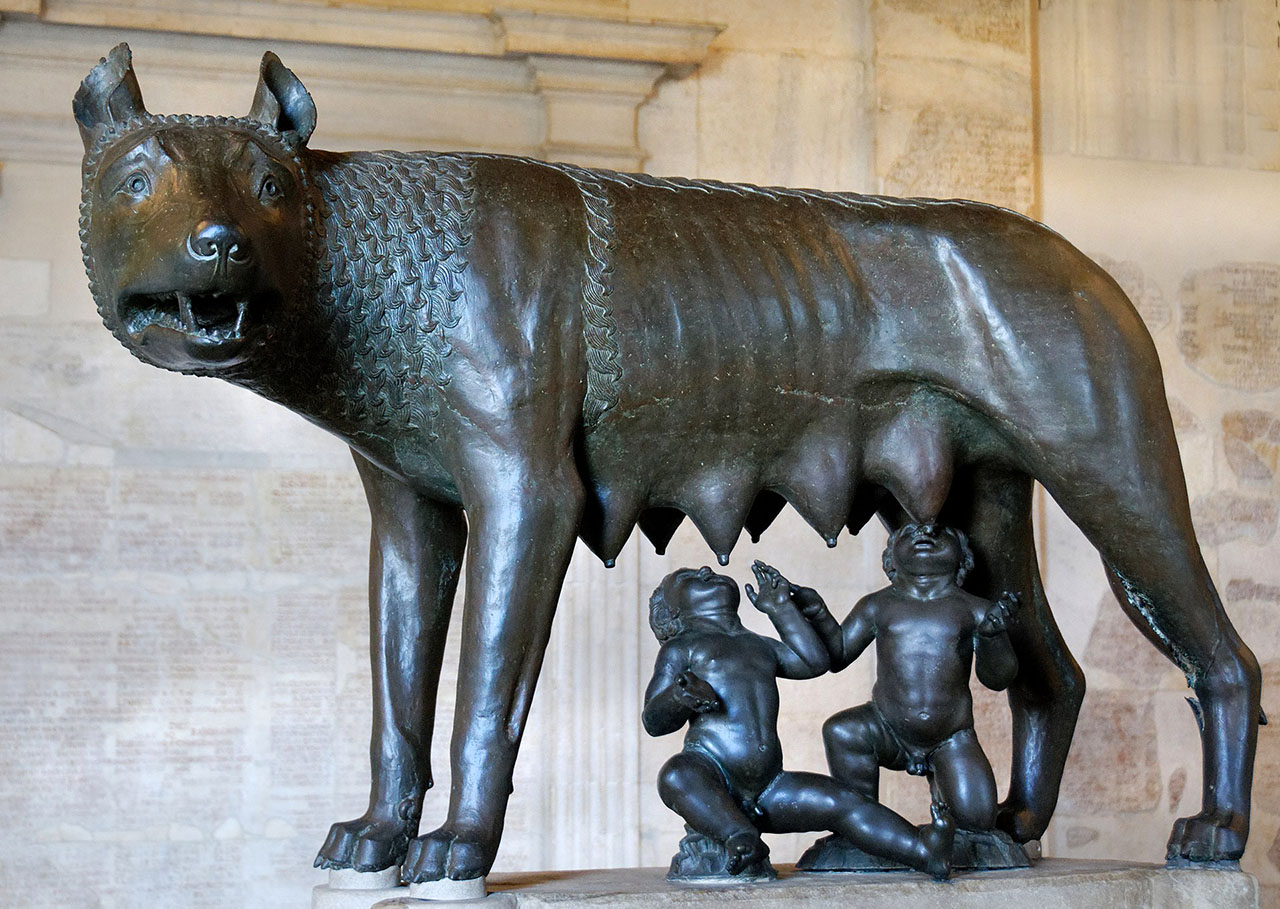
-
Brief History of the Founding of Rome (753 BCE):
According to Roman mythology, Rome was founded by Romulus and Remus in 753 BCE. While the historical accuracy of this legend is debated, archaeological evidence suggests that Rome did emerge as a settlement around this time. Initially, Rome was a small city-state in central Italy.
-
Roman Republic (509 BCE):
In 509 BCE, the Roman monarchy was overthrown when the last King of Rome (the Etruscan king Lucius Tarquinius Superbus), and the Roman Republic was established. The Republic was a system of government in which power was held by elected officials, including two consuls, a Senate, and popular assemblies. This new political structure allowed Rome to expand its influence and assert control over the Italian peninsula.
-
Conquest of Italy by the Romans (5th-3rd centuries BCE):
Over several centuries, Rome gradually expanded its control over the Italian peninsula through a series of military campaigns. Rome engaged in wars with neighboring city-states, such as the Etruscans, Samnites, and Gauls, ultimately conquering and assimilating them into the Roman Republic.
-
Punic Wars (264-146 BCE):
The Punic Wars were a series of conflicts between Rome and Carthage, a powerful city-state in North Africa. The wars were fought over control of the Mediterranean and marked a significant turning point in Rome's rise to power.
The most famous figure from this period was the Carthaginian general Hannibal, who posed a formidable threat to Rome. However, Rome emerged victorious in the end, destroying Carthage and gaining control of its territories, including Sicily, Sardinia, and Spain.
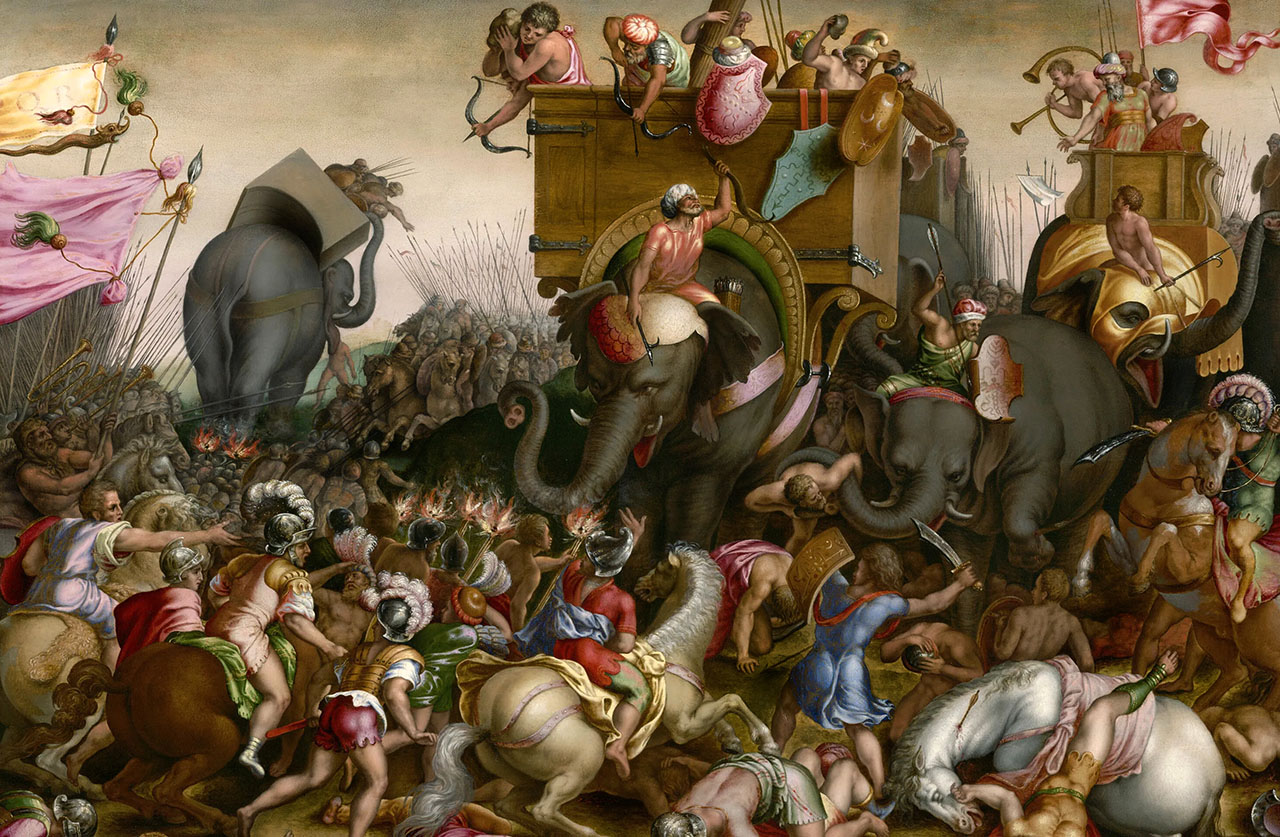
-
Hellenistic Influence on Ancient Rome (3rd-2nd centuries BCE):
After the conquest of Greece by Rome, the Romans were exposed to Hellenistic culture. The influence of Greek art, philosophy, literature, and architecture had a profound impact on Roman society, leading to a cultural renaissance.
Roman intellectuals embraced Greek ideas and incorporated them into Roman life, creating a vibrant fusion of cultures.
-
Internal Conflicts and Reforms (2nd-1st centuries BCE):
The Roman Republic faced internal conflicts and political unrest during this period. Social and economic inequalities, along with struggles for power between the ruling elites, led to a series of political and social reforms.
Notable reformers, such as the Gracchus brothers (Tiberius and Gaius), sought to address issues such as land distribution and the power of the Senate. These reforms, while met with resistance and violence, highlighted the growing tensions within the Republic.
-
Julius Caesar and the End of the Republic (49-44 BCE):
Julius Caesar, a military general and statesman, played a crucial role in the transition from the Republic to the Empire. Through a series of military campaigns, Caesar expanded Rome's territories, most notably in Gaul (modern-day France).
In 49 BCE, Caesar crossed the Rubicon River, defying the Senate's order to disband his army, which sparked a civil war. After emerging victorious, Caesar assumed the title of dictator, but his reign was cut short by his assassination in 44 BCE.
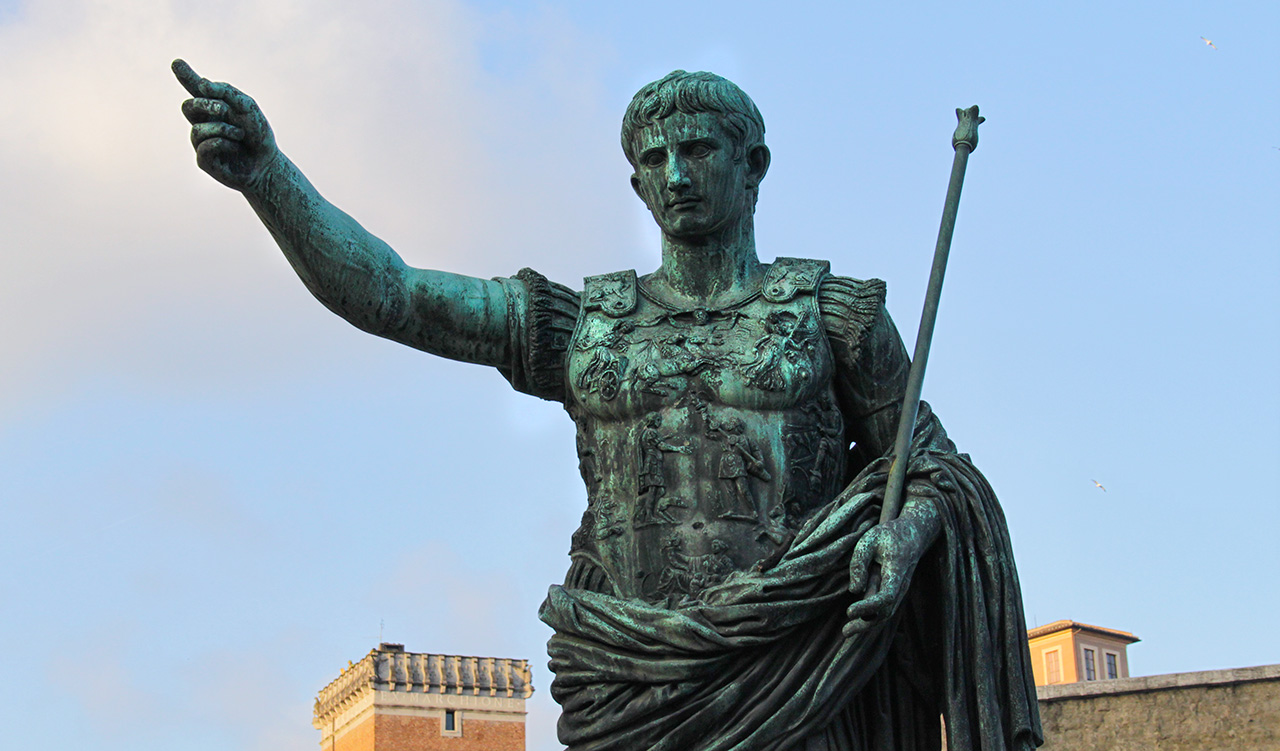
-
Augustus and the Roman Empire (27 BCE-14 CE):
Following the death of Julius Caesar, his adopted son Octavian, later known as Augustus, emerged as the sole ruler of Rome. Augustus implemented a series of political reforms, transforming Rome from a republic into an empire.
He established the principate, a system in which he held ultimate authority but maintained the facade of republican institutions. Under Augustus, Rome experienced a period of relative stability.
Part 2: Pax Romana and the Golden Age
The Pax Romana, meaning "Roman Peace," refers to a period of relative stability and peace that lasted for approximately two centuries, from 27 BCE to 180 CE, during the early Roman Empire.
It was characterized by internal peace, economic prosperity, and the expansion of Roman influence across vast territories. The Pax Romana also coincided with what is often referred to as the Golden Age of the Roman Empire, a period that contributed to the consolidation of Roman power and the establishment of a vast empire that left an indelible impact on the history of Western civilization.
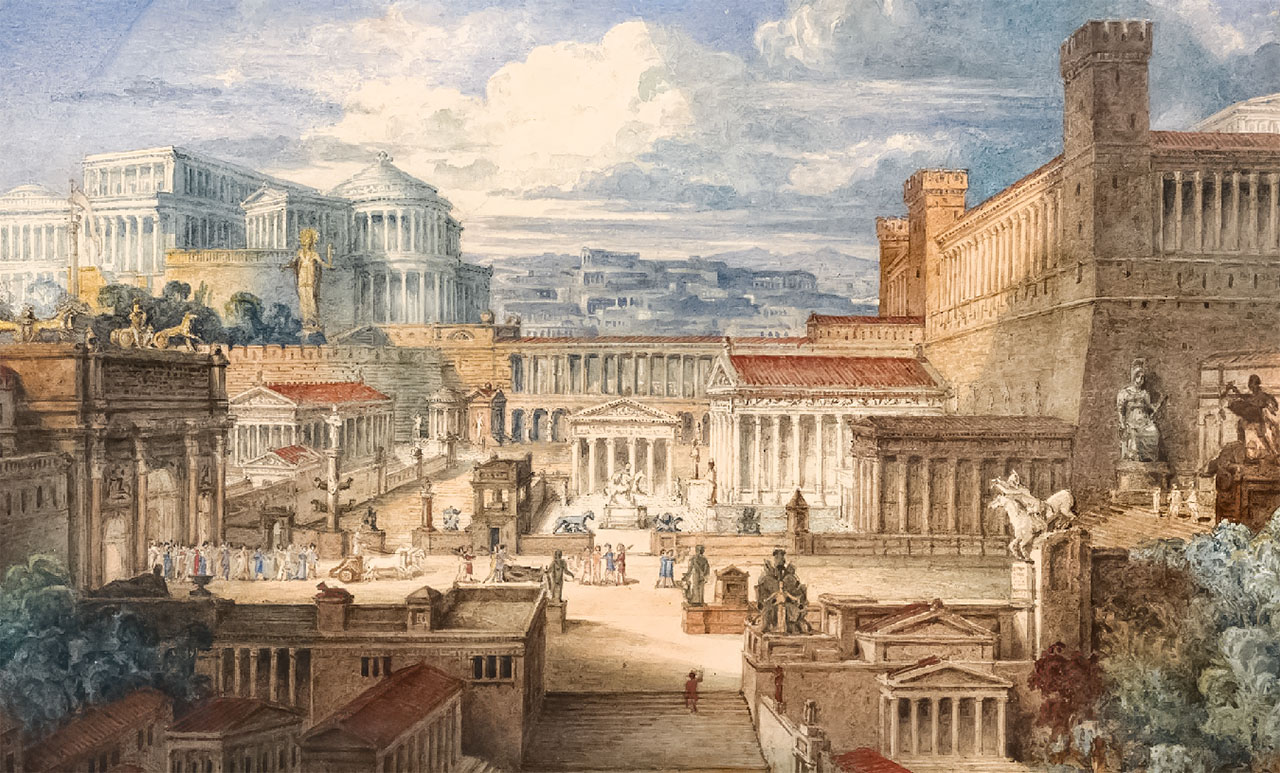
-
Emperor Augustus and Consolidation (27 BCE - 14 CE):
Augustus, the first emperor of Rome, brought an end to the civil wars that had plagued the Roman Republic. He implemented a series of political reforms, including the establishment of a standing professional army and the reorganization of provincial administration. Augustus' reign marked the beginning of the Pax Romana, as he focused on consolidating power and stabilizing the empire.
-
Ancient Rome’s Economic Prosperity and Infrastructure:
During the Pax Romana, the Roman Empire experienced significant economic growth and prosperity. Trade flourished, facilitated by the Roman road network, which connected regions from Britain to the Near East.
The empire's vast territories provided access to valuable resources, while stable governance encouraged economic activity. This period witnessed the expansion of agriculture, mining, and manufacturing, leading to increased wealth and prosperity.
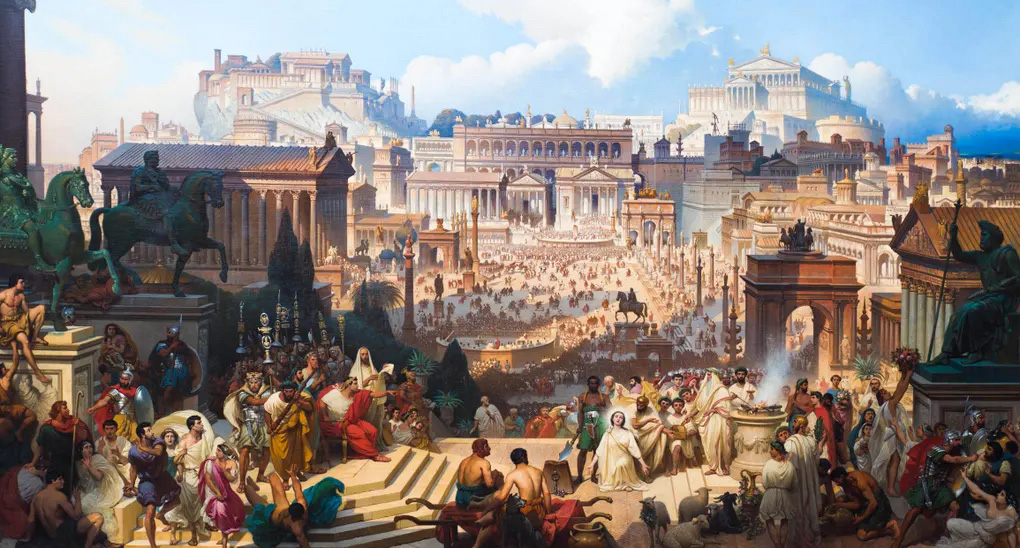
-
Ancient Roman Law and Governance:
The Pax Romana saw the codification and enforcement of Roman law. Emperor Augustus initiated legal reforms, and subsequent emperors built upon this foundation. The Roman legal system emphasized principles such as equality before the law and protection of private property. This provided a sense of security and stability to citizens and facilitated commerce and trade throughout the empire.
-
Rome’s Imperial Expansion:
The Pax Romana witnessed the continued expansion of the Roman Empire. Roman legions undertook military campaigns to secure and maintain control over territories. This expansion resulted in the incorporation of regions such as Britain, Gaul (modern-day France), Spain, North Africa, and parts of the Middle East into the empire. These conquests brought wealth, resources, and new cultures under Roman rule.
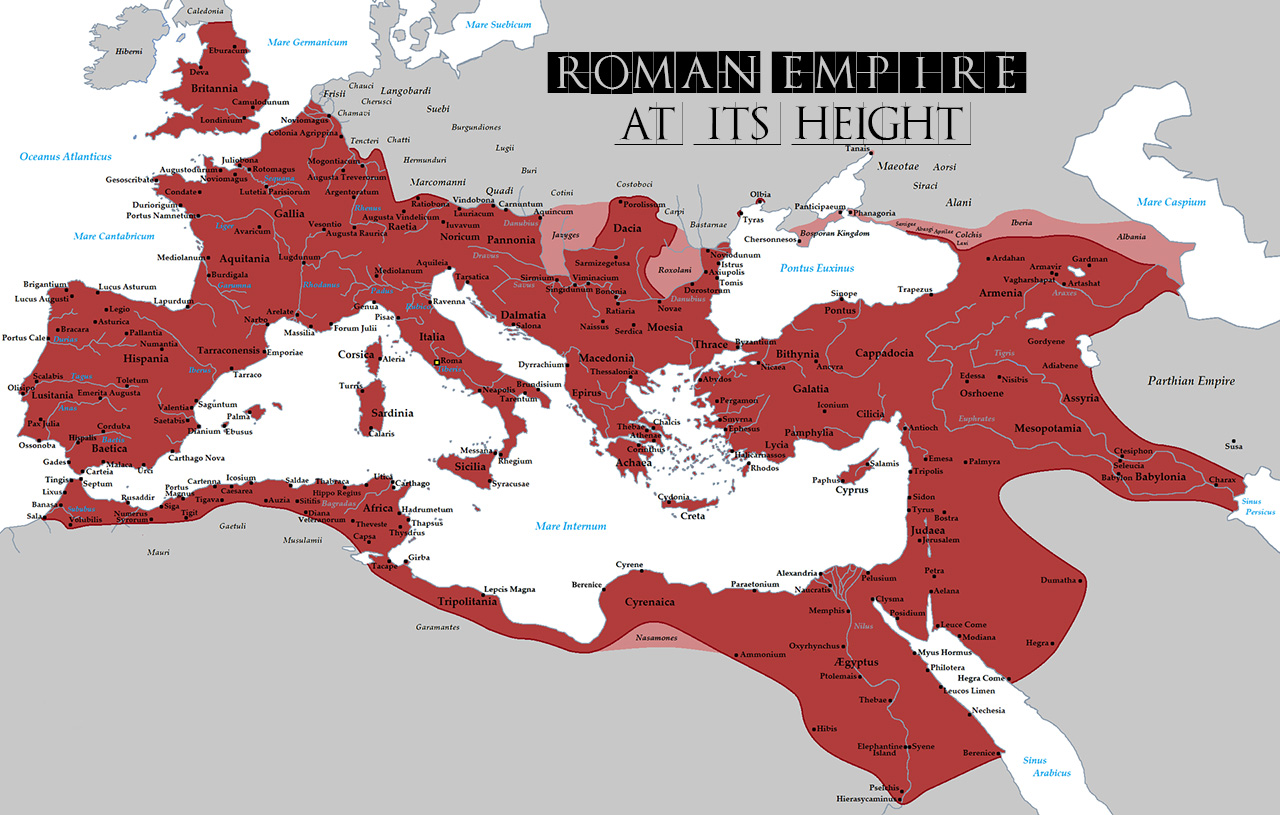
-
Ancient Rome’s Cultural Flourishing:
The Golden Age of the Roman Empire, which is often associated with the Pax Romana, was marked by a cultural renaissance. The Romans were heavily influenced by Greek culture and incorporated elements of Greek art, philosophy, and literature into their own.
This period saw the emergence of renowned poets like Ovid and Virgil, the architectural marvels of the Colosseum and the Pantheon, and the development of Roman law and governance systems.
-
Ancient Rome’s Scientific and Technological Advances:
The Roman Empire made significant contributions to science and technology during this period. Roman engineers excelled in constructing aqueducts, roads, bridges, and public buildings. They also developed advanced engineering techniques, such as the use of concrete.
Additionally, Roman scholars made progress in fields like astronomy, mathematics, and medicine, building upon the knowledge inherited from ancient Greece and the Hellenistic period.
-
Ancient Roman Art and Literature:
The Pax Romana witnessed a flourishing of art and literature. Roman artists created impressive sculptures, mosaics, and frescoes, often depicting scenes from mythology and everyday life. Roman literature produced notable works such as the Aeneid by Virgil and the Metamorphoses by Ovid. These literary works reflected the values, aspirations, and cultural achievements of the empire.
Part 3: The Decline of the Roman Empire
One of the primary factors contributing to the decline of the Roman Empire was the instability of its political structure. As the empire expanded, it became increasingly challenging to maintain effective governance.
Power struggles and frequent assassinations plagued the empire, creating a climate of uncertainty. Emperors would rise and fall, often through violent means, leading to a lack of stability and consistent leadership. The weakening of the Senate's influence and the rise of autocratic rule further eroded the empire's political foundations. Corruption and the lack of effective leadership eroded the authority of the central government and contributed to instability
To make matters worse, probably the first pandemic ever recorded wreaked havoc across the Roman Empire.
-
Antonine Plague - 2nd century AD
The Antonine Plague, likely caused by smallpox or measles, ravaged the Roman Empire during the reign of Marcus Aurelius in the 2nd century AD. This devastating pandemic not only claimed the lives of millions but also had profound socio-economic and political ramifications, contributing significantly to the decline of the Roman Empire.
The loss of a substantial portion of the population led to labor shortages, disrupting agricultural production and trade networks. Furthermore, the weakened state of the population left them more susceptible to subsequent outbreaks of disease, perpetuating a cycle of decline.
The plague also severely impacted the Roman military as well. Soldiers stationed along the frontiers were not immune to the disease, and the close quarters of military camps facilitated its spread. The loss of soldiers weakened the Roman military's effectiveness in defending the borders against external threats, such as incursions by Germanic tribes and other barbarian groups.
Additionally, the need to replenish the ranks with less experienced recruits further diminished the military's strength and cohesion. This weakened defense, combined with internal turmoil and external pressures, hastened the Empire's eventual collapse by weakening its foundations and capacity to govern effectively.
-
Roman Empire’s Crisis of the Third Century (235-284):
The Roman Empire faced a series of internal and external challenges during this period, including frequent changes in leadership, civil wars, economic instability, and invasions by Germanic and Persian peoples. The empire experienced a decline in centralized power and struggled to maintain its borders and military strength.
-
The Emperor Diocletian Reforms (284-305):
Emperor Diocletian implemented a series of reforms to address the problems of the empire. He established the Tetrarchy, dividing power between two senior emperors (Augusti) and two junior emperors (Caesars). He also attempted to stabilize the economy and enacted social and administrative reforms. However, these measures were only partially successful in restoring stability.
-
Constantine the Great (306-337):
Constantine emerged as a powerful figure during the civil wars that followed Diocletian's abdication. He became the sole ruler of the empire and played a crucial role in the establishment of Constantinople (formerly Byzantium) as the new capital in the East, strategically located on the Bosporus Strait, which connected the Black Sea and the Mediterranean.
This marked the beginning of the division between the Western and Eastern Roman Empires.
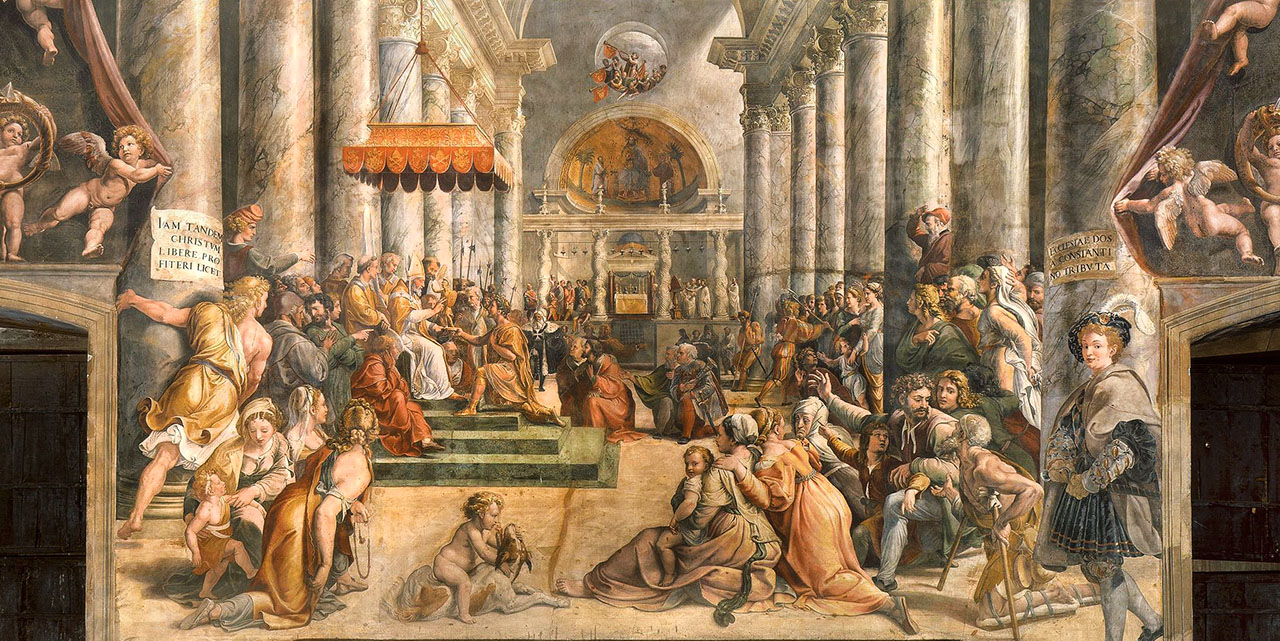
-
Division of the Western Roman Empire (395-476):
The division between the Eastern and Western Roman Empires became more pronounced over time. The Western Roman Empire faced continuous internal strife, economic decline, and repeated invasions.
Emperor Theodosius I was the last emperor to rule over both the Eastern and Western regions. He divided the empire between his two sons, Arcadius, who inherited the Eastern Roman Empire, and Honorius, who inherited the Western Roman Empire. This formalized the political and administrative separation between the two halves.
Over time, economic disparities between the Western and Eastern Roman Empires became apparent. The Western Empire faced economic decline, characterized by inflation, taxation issues, agricultural decline, and a shrinking tax base. In contrast, the Eastern Empire, centered around Constantinople, remained economically prosperous, benefiting from its strategic location for trade routes and its strong urban centers.
-
Barbarian Invasions & External Pressures on the Roman Empire
The Roman Empire faced constant threats from barbarian tribes and invading forces.
As Rome struggled to defend its frontiers, it faced relentless invasions and military confrontations. The Huns, led by Attila, further destabilized the empire, forcing tribes to seek refuge within Roman territories. The empire's inability to effectively repel these invasions and protect its borders strained its resources and weakened its hold on the provinces.
During the 4th and 5th centuries CE, the Western Roman Empire faced increasing pressure from barbarian invasions. Germanic tribes such as the Visigoths, Ostrogoths, Vandals, and others encroached upon Roman territory, eventually sacking Rome in 410 CE.
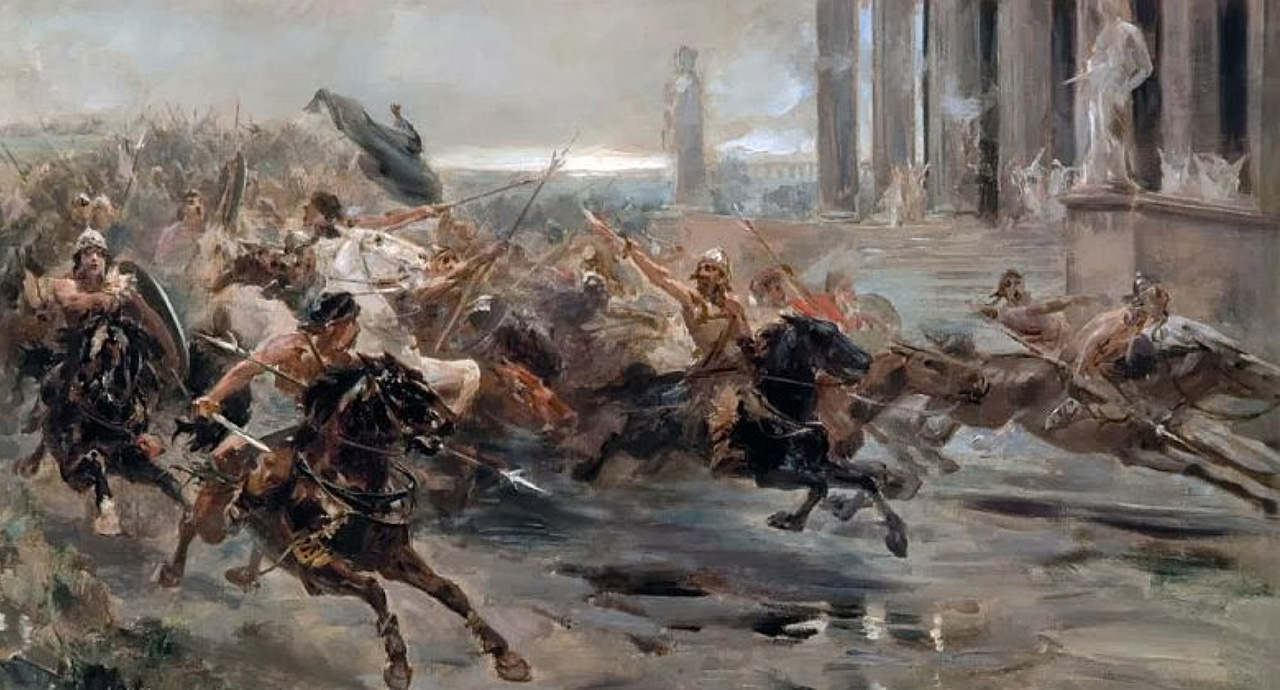
-
Roman Empire's Economic Decline and Social Unrest
The social fabric of the Roman Empire underwent profound changes during its decline. The vast wealth disparity between the elite and the common people created social unrest and class divisions.
The empire faced severe inflation, debasement of currency, and economic stagnation. Tax burdens increased, and the decline of agricultural productivity led to food shortages.
Slave revolts, such as the famous Spartacus uprising, highlighted the growing discontent among the lower classes. Furthermore, the erosion of traditional Roman values, influenced by the influx of diverse cultures within the empire, contributed to a sense of cultural decline and loss of identity.
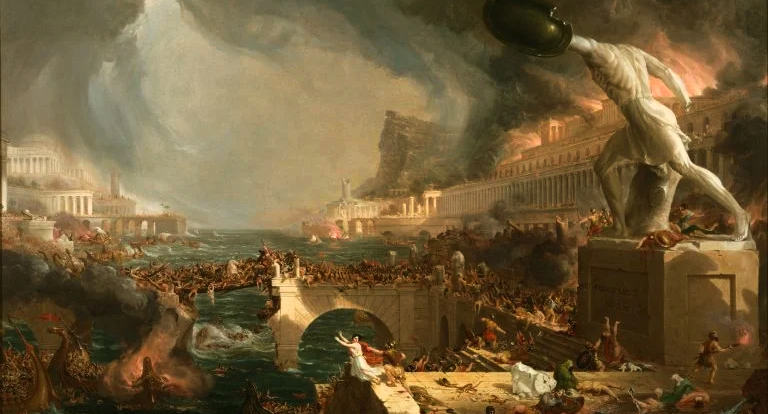
Part 4: The Fall of the Western Roman Empire
The fall of Rome itself marked a critical turning point in the empire's decline. As mentioned above, in 410 CE, the Visigoths, led by Alaric, sacked the city, shocking the empire and signifying the vulnerability of Rome.
Eventually, in 476 CE, the last Roman emperor, ironically named Romulus Augustulus, was overthrown by the Germanic chieftain Odoacer, formally bringing an end to the Western Roman Empire. The Roman Empire began with Romulus, the first king of Rome, and ended with Emperor Romulus Augustulus, the last emperor of the Western Roman Empire.
While the Western Roman Empire fell, the Eastern Roman Empire, (the Byzantine Empire), continued to thrive. The Byzantine Empire, with its capital in Constantinople, endured for another thousand years reserving aspects of Roman culture, administration, and governance, until its fall to the Ottoman Turks in 1453. The Byzantines preserved and transmitted much of the ancient Greek and Roman knowledge, art, and culture.
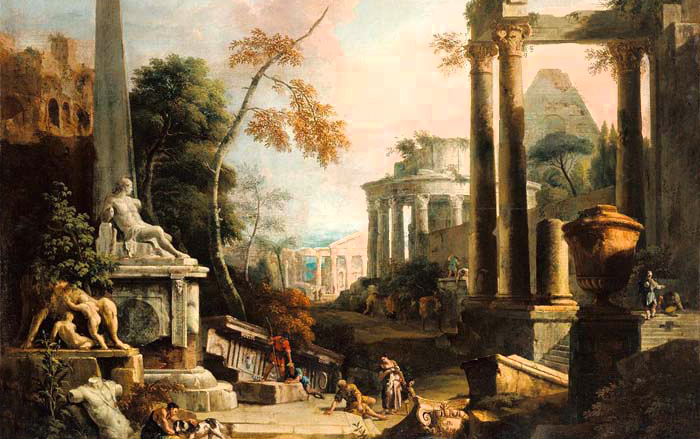
In conclusion, the decline and fall of the Roman Empire encompassed a wide range of factors that led to its eventual collapse. Political instability, economic challenges, external invasions, and cultural transformations all played significant roles in this historical event. By understanding the intricacies of Rome's decline, we gain insights into the complexities of maintaining a vast empire and the enduring lessons it offers for future civilizations.
Explore the wonders of Ancient Rome on our private Rome Tours
Rome was certainly not built in a day, but you may certainly see most ancient places in Rome in one day. Join us on this historical odyssey on our private tours of Rome's ancient wonders, and embark on a captivating journey into the past, and let the echoes of history embrace you.
Rome is a city rich in history, and visiting these historical sites in Rome is like embarking on a time-traveling adventure, where you can immerse yourself in the world of togas and sandals, bustling marketplaces, and grand architectural wonders.
It's a journey that brings the stories of emperors, gladiators, and ordinary Roman citizens back to life, igniting our curiosity and deepening our understanding of the human experience.
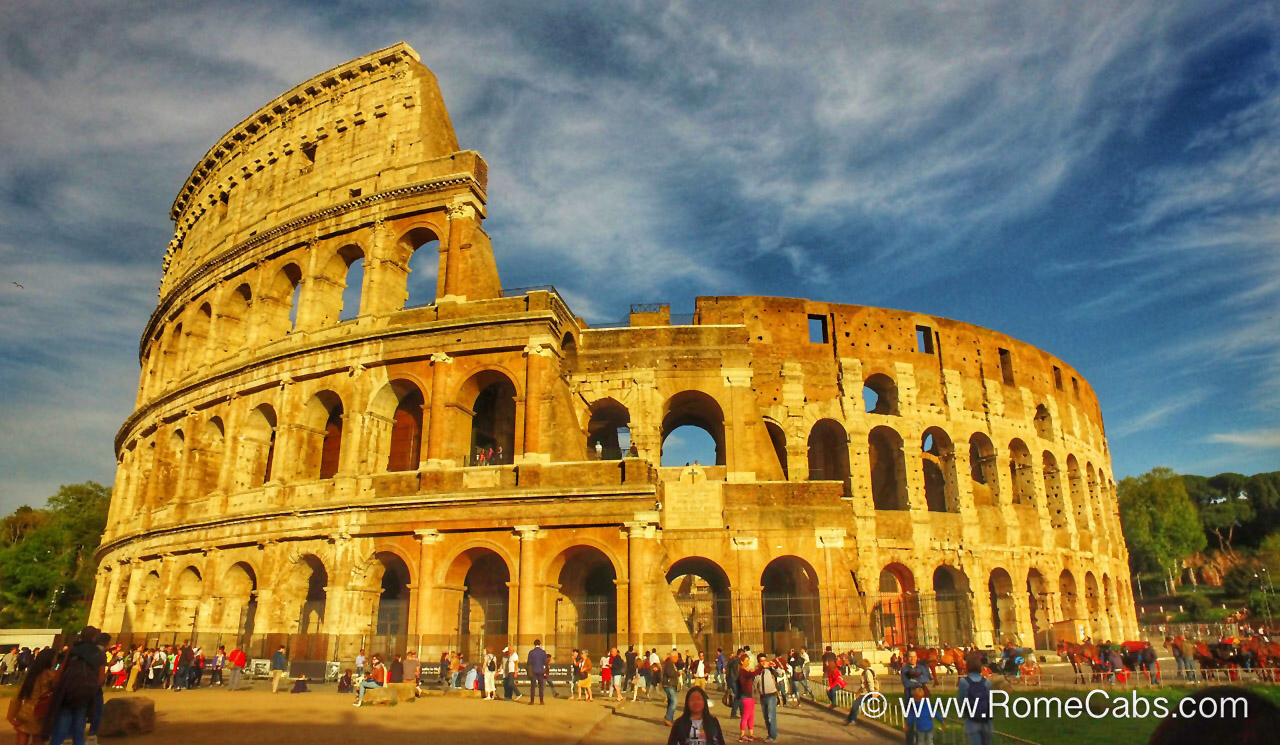
Colosseum:
One of the Seven Wonders of Ancient Rome, the iconic Colosseum is the largest amphitheater built during the Roman Empire. It hosted grand spectacles, including gladiator fights, animal hunts, and mock naval battles. Explore the ancient ruins and imagine the roar of the crowds that once filled this magnificent structure.
Roman Forum:
Adjacent to the Colosseum lies the Roman Forum, the political and social center of ancient Rome. Stroll through the ruins of temples, basilicas, and government buildings. This was where public speeches were given, elections were held, and the heart of Roman civic life beat.
Palatine Hill:
Just above the Roman Forum, Palatine Hill offers stunning views of the city and was the site of the imperial palaces. Explore the remnants of luxurious residences where emperors, such as Augustus and Domitian, lived. Admire the beautifully preserved frescoes in the House of Augustus and the House of Livia.
Pantheon:
The awe-inspiring Pantheon is a marvel of Roman engineering. Built as a temple to the gods, it features a magnificent dome with an oculus at the center. Take a moment to appreciate the grandeur of this architectural masterpiece, which has served as a model for centuries.
Trajan's Column and Forum:
Built to commemorate Emperor Trajan's victories, Trajan's Column is a towering monument adorned with detailed reliefs depicting military campaigns. Nearby, the ruins of Trajan's Forum provide a glimpse into the grandeur of ancient Roman architecture.
Baths of Caracalla:
Step into the world of ancient Roman leisure and visit the Baths of Caracalla. These sprawling public baths were an essential part of Roman social life. Marvel at the massive structures, including the frigidarium (cold room), caldarium (hot room), and natatio (swimming pool).
Circus Maximus:
See the Circus Maximus, an ancient chariot racing stadium. Imagine the excitement and cheers of the crowds as charioteers raced around the track, competing for victory. While the original structure is mostly gone, you can still see the outlines of the track and soak in the historical atmosphere.
Ancient Appian Way:
Take a trip along the ancient Appian Way, one of the most important Roman roads. Explore the well-preserved sections and admire the ancient tombs that line the road. This route once connected Rome to the southern regions of Italy, playing a crucial role in Roman expansion and trade.
Ostia Antica:
Venture to Ostia Antica on a tour from Rome, the ancient port city of Rome. Explore the well-preserved ruins of this once-thriving commercial hub, including the amphitheater, baths, temples, and residential buildings. It offers a fascinating glimpse into daily life during the Roman Empire.
These vestiges of the ancient Roman Empire are not mere remnants of a distant past; they are living witnesses to the rise and fall of an extraordinary civilization. They invite us to reflect on the grandeur, achievements, and eventual challenges faced by the Roman Empire.
So, step into the footsteps of ancient Romans, let Stefano’s RomeCabs Tours take you to explore these magnificent vestiges, and allow the echoes of the past guide you through the captivating story of Rome's ancient glory.
Discover the Eternal City with RomeCabs Rome Limousine Tours and Rome Private Excursions
Experience the magic of Rome like never before with RomeCabs' Rome Limousine Tours. Designed for those seeking a blend of luxury, comfort, and personalized service, our tours allow you to explore the city's iconic landmarks and hidden gems in style.
Travel in our deluxe Mercedes vehicles, where comfort meets elegance, ensuring that your journey through the Eternal City is as enjoyable as the destinations themselves. Our professional drivers are not only skilled behind the wheel but also possess a wealth of knowledge about Rome's rich history and culture. Our drivers will take you close up to your desired locations, minimizing walking distances and maximizing your sightseeing experience.
Whether you're traveling with family, and friends, or on a romantic getaway, a RomeCabs Limousine Tour is the perfect way to savor the beauty and history of this timeless city. Let us take care of the details, so you can focus on creating unforgettable memories in the heart of Italy. Book your Rome tour today and discover why Rome is truly the Eternal City!
Thank you for reading our blog The Rise and Fall of the Roman Empire, and for choosing Stefano's RomeCabs for your private tours in Italy. We look forward to seeing you Rome!
Discover more of Rome with RomeCabs Travel Blogs:
- Top Best Things to See and Do in Rome this year
- The Best Luxury Tours of Rome, Italy
- 7 Tips to Experience Rome Like a Local
- Discover the Top Best Rome Shore Excursions from Civitavecchia
* Find RomeCabs online also on:
- RomeCabs FACEBOOK
- RomeCabs PINTEREST
- RomeCabs TWITTER
- RomeCabs INSTAGRAM
- RomeCabs FLICKR Photo Gallery
- Recommended on Cruise Critic
- Read More Italy Travel Blogs: https://rome-cabs.org/
